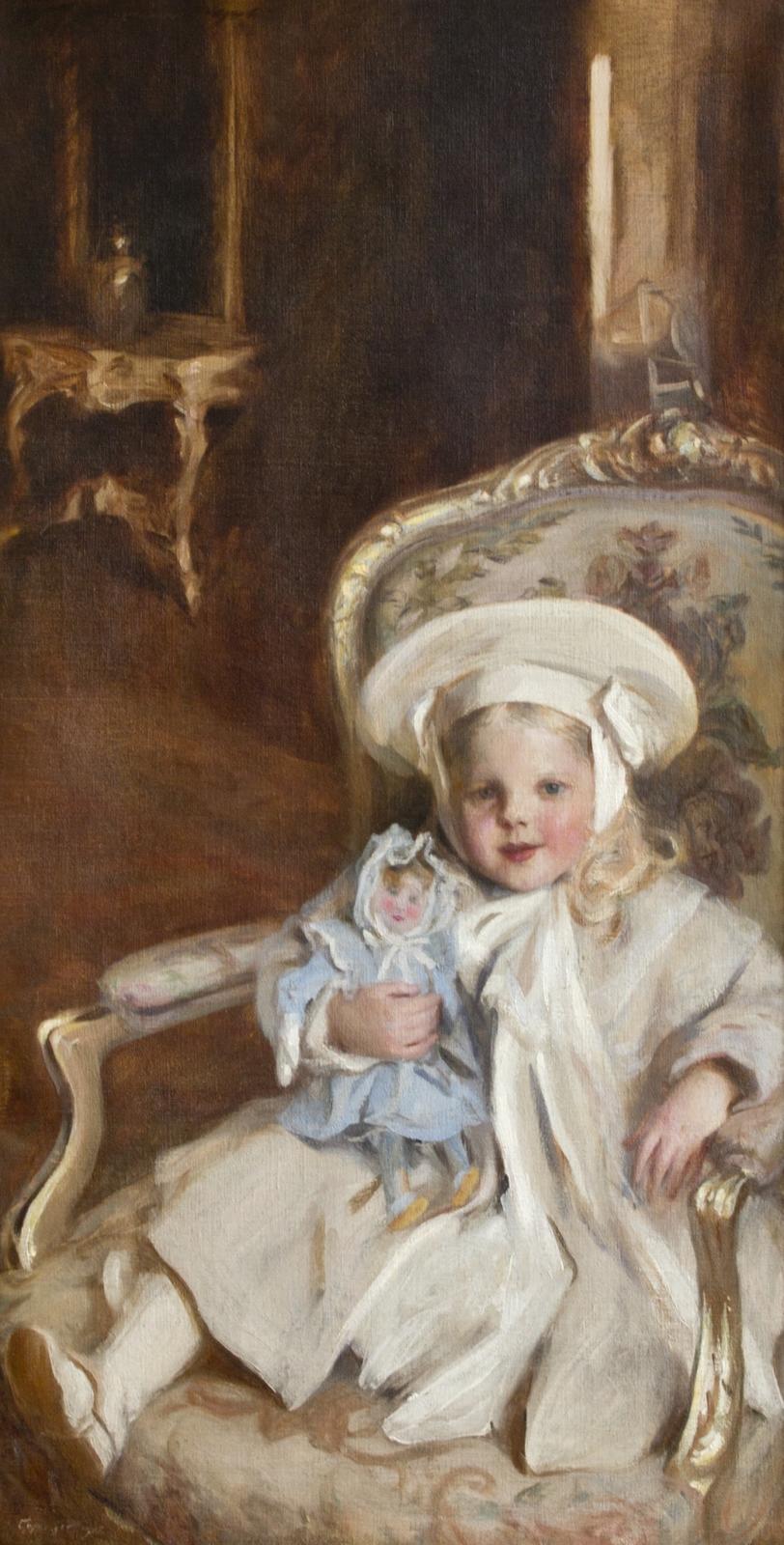






Framed: 59 x 35 inches
artist
William Thomas Smedley was born on March 26, 1858 at his ancestral homestead near West Chester, Pennsylvania. At the age of fifteen, after attending public school, William began working at the Daily Local News, published in West Chester. The founder of the newspaper, Wilmer Worthington, was something of an amateur landscape painter, and it was probably through him that Smedley was first encouraged to pursue a career in the graphic arts. In 1877, Smedley left West Chester for the larger urban environment of Philadelphia. Here he studied art at The Pennsylvania Academy of the Fine Arts, and in 1878 he enrolled in the night drawing class where he studied under Dr. W.W. Keen and Thomas Eakins during the height of Eakins' teaching career. In addition to his training in anatomy, it was at The Academy that Smedley acquired excellence in perspective and draftsmanship that is evident in his mature work.
The decades before and after the turn of the nineteenth century were the heyday of American illustration, and during that time an increasing number of illustrations were created for books, magazines, newspapers, and posters. This period lasted about thirty years, from approximately 1880 to the middle of the twentieth century's second decade. So much of our image of the late 19th century comes to us through illustration. With Gibson and, later, with Christy, Smedley's work pictures an elite, upper class society. Smedley's people are often dressed in the latest fashions, participating in activities appropriate to their privileged class. His illustration of a story's dramatic turning point depicts the hero or heroine as products of the high Victorian age. Smedley's women are endowed with beauty tempered by virtue. His men are, foremost, gentlemen, ennobled by graciousness. Smedley's people embody a social ideal: respectability.
Smedley's first commercial work as a young illustrator was for a book which illustrated the various homes of the various members of the Jenks family in the Philadelphia area, and commissioned by William Jenks, the head of the family and a wealthy wool merchant. By the early 1880's he had moved to New York City where he became a member and had a studio in the famous Tile Club in the heart of New York's art center. It was during this time as well that Smedley's work began showing up in such publications as Harper's Weekly, Harper's Young People, Harper's Monthly Magazine, Scribner's and St. Nicholas.
W. T. Smedley was a prolific and tremendously popular illustrator. Whether pictorial or narrative in nature, his work has an enduring and consistent quality worthy of our closer examination. Smedley's illustrations are beautiful. In them, we see exciting composition, exceptional use of light and shadow and texture, and mastery of the human form. W. T. Smedley possessed the rare quality of artist as storyteller. Famous during his career, Smedley is an excellent example of the fine illustrator largely forgotten through changing public taste and habits.
Aside from the wide audience that Smedley reached and the technical influence he had on others, his illustrations stand as strikingly original works of art. The early gouaches and watercolors, with their subtle tonalities and crisp highlights, are enchanting works of art that establish for WT Smedley an important place in the history of American Illustration.
In 1981 and 1982 John H. Gorman published a catalogue Raisonné in collaboration with an exhibition at the Brandywine River Museum and Kennedy Galleries.
provenance
Private Collection, Fairfield, Connecticut
Private Collection, Greenwich, Connecticut






